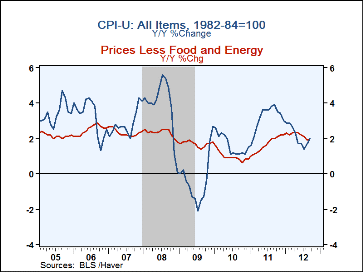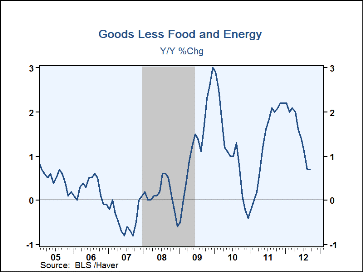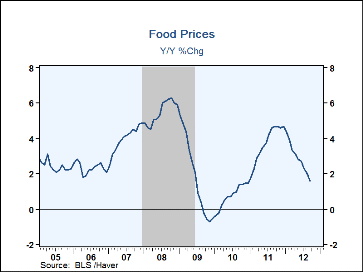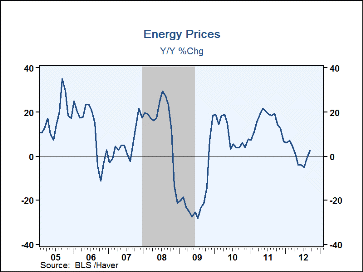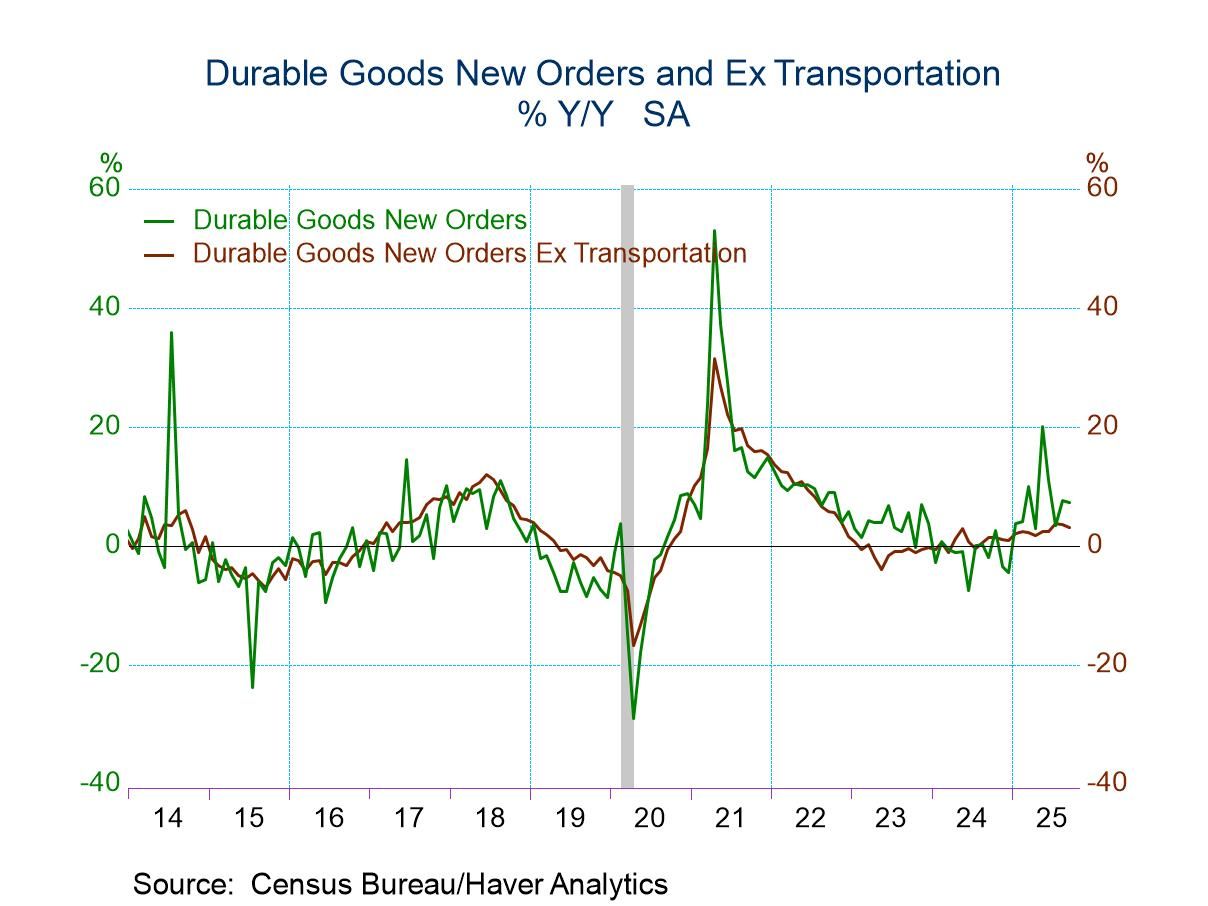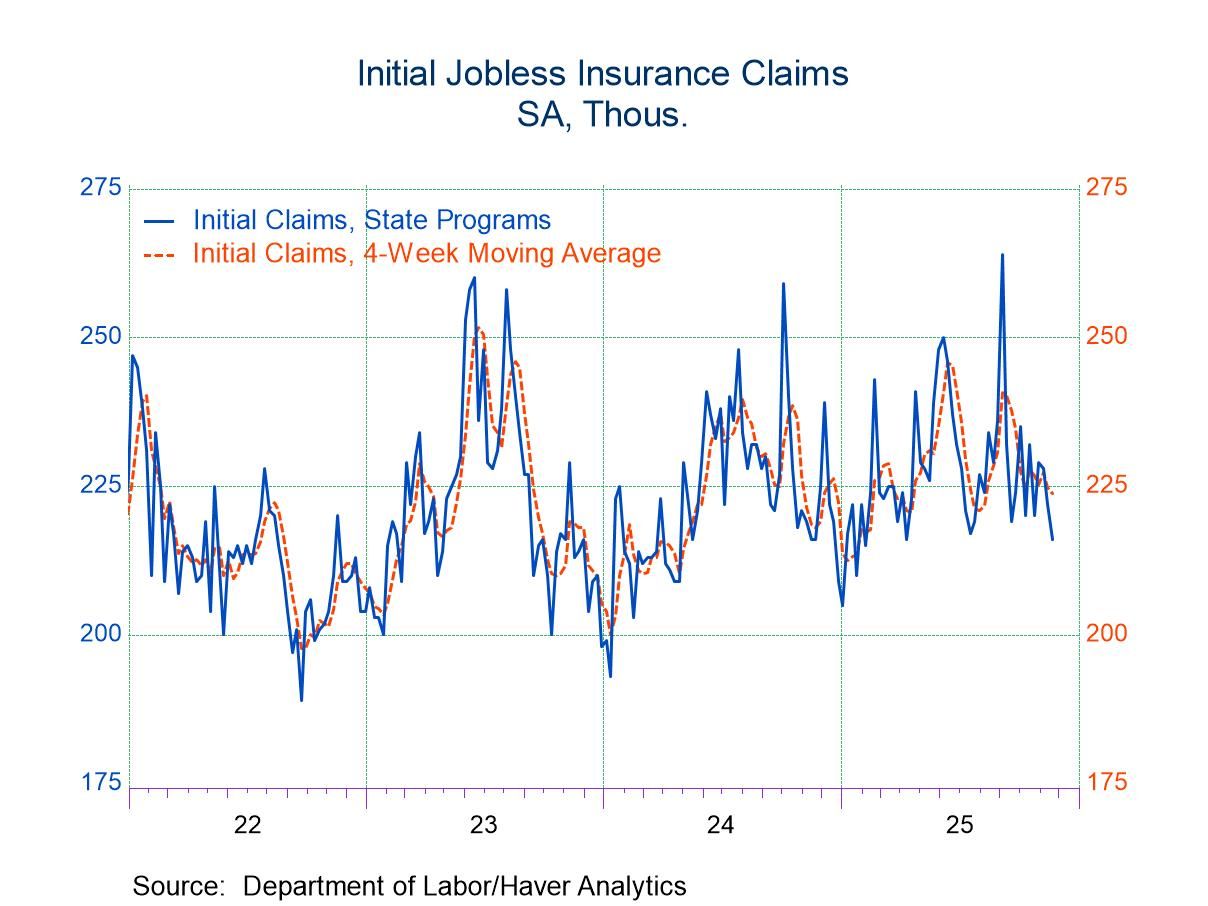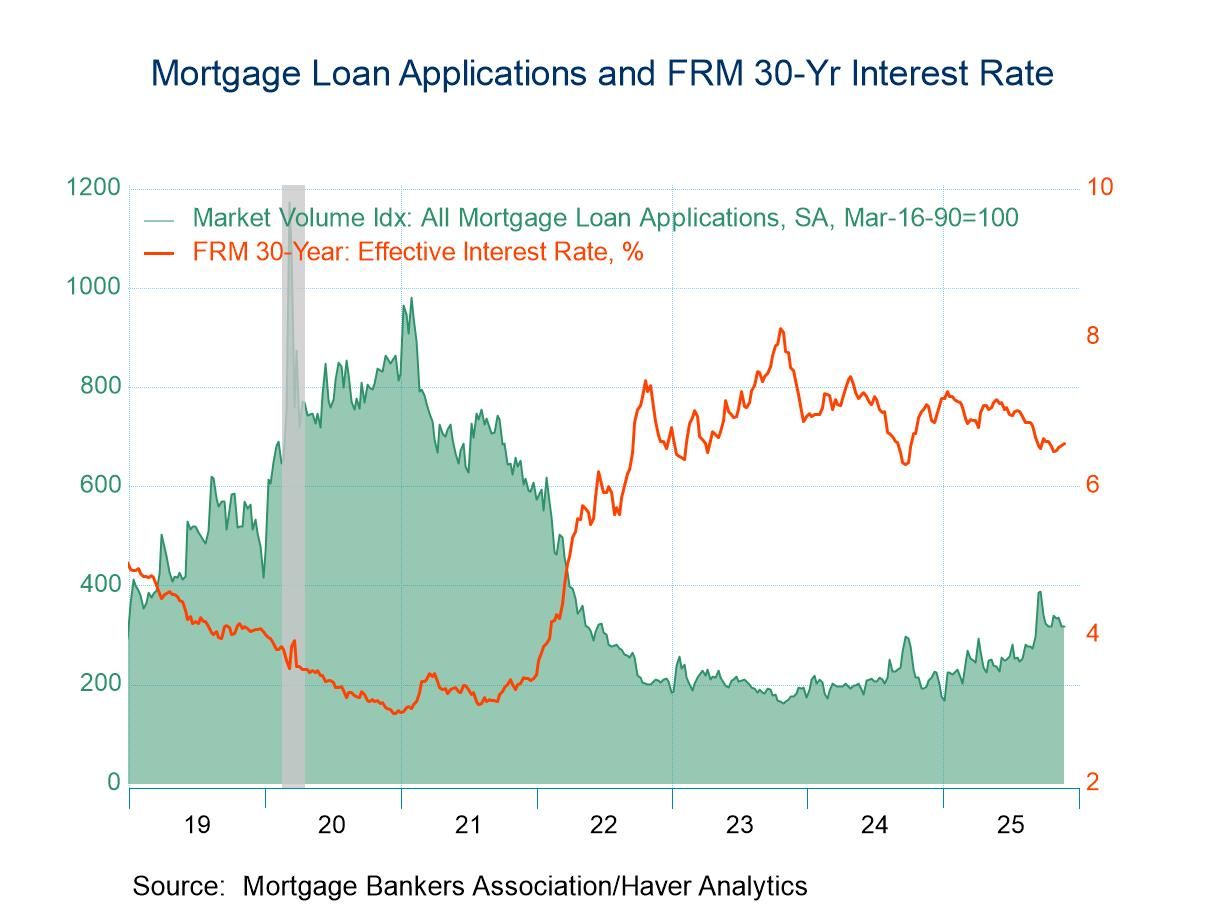 Global| Oct 16 2012
Global| Oct 16 2012U.S. Consumer Prices Post Another Strong Increase
by:Tom Moeller
|in:Economy in Brief
Summary
Consumer prices posted a second consecutive 0.6% rise during September. The gain was roughly in line with expectations for a 0.5% rise. Despite this strength, prices excluding food & energy continued rising just 0.1% (2.0% y/y) for [...]
Consumer prices posted a second consecutive 0.6% rise during September. The gain was roughly in line with expectations for a 0.5% rise. Despite this strength, prices excluding food & energy continued rising just 0.1% (2.0% y/y) for the third consecutive month.
Higher energy prices were again the source of last month's strength posting a 4.5% (2.3% y/y) rise. Gasoline prices jumped another 7.0% (6.8% y/y) after a 9.0% August increase. Fuel oil prices also posted a strong 4.1% (4.0% y/y) rise along with natural gas costs which rose 2.0% (-10.7% y/y). Electricity costs rose a modest 0.2% (-1.5% y/y) for the second consecutive month.Food prices remained very well behaved and inched up just 0.1% (1.6% y/y). Dairy product prices provided much of the lift with a 0.4% rise (-1.9% y/y). Working the other way, meats prices fell 0.8% (+1.6% y/y) along with fruit & vegetable costs which moved 0.4% lower (-1.7% y/y).
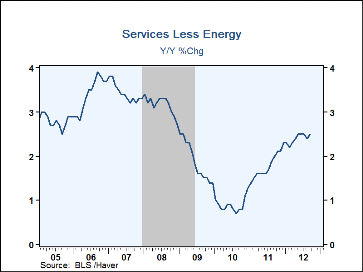 For goods alone, prices excluding food & energy fell 0.2%
(+0.7% y/y) for the second consecutive month. The decline mostly reflected
a 1.4% decline (-1.6% y/y) in used car prices and a 0.1% dip (+1.0% y/y)
in new vehicle costs. Working higher were apparel prices which rose 0.3%.
The 2.7% y/y gain contrasted with the 0.5% decline in 2010. Household
furniture costs fell 0.3% (-0.2% y/y) but appliance prices rose 0.2% (0.5%
y/y).
For goods alone, prices excluding food & energy fell 0.2%
(+0.7% y/y) for the second consecutive month. The decline mostly reflected
a 1.4% decline (-1.6% y/y) in used car prices and a 0.1% dip (+1.0% y/y)
in new vehicle costs. Working higher were apparel prices which rose 0.3%.
The 2.7% y/y gain contrasted with the 0.5% decline in 2010. Household
furniture costs fell 0.3% (-0.2% y/y) but appliance prices rose 0.2% (0.5%
y/y).
The improved 0.3% increase (2.5% y/y) in core service prices reflected another 0.2% rise (2.2% y/y) in shelter costs (32% of the CPI). Owners equivalent rent of primary residences rose 0.2% (2.1% y/y). The y/y increase compares to a low of -0.3% in early 2010. Public transportation prices rose 1.3% (-0.9% y/y) while medical care service prices increased 0.4% (4.4% y/y). Education costs rose 0.3% (3.6% y/y) while recreation services prices ticked up 0.1% (3.4% y/y).
The consumer price data is available in Haver's USECON database while detailed figures can be found in CPIDATA. The expectations figure is from Action Economics and is found in the AS1REPNA database.
| Consumer Price Index(%) | Sep | Aug | Jul | Sep Y/Y | 2011 | 2010 | 2009 |
|---|---|---|---|---|---|---|---|
| Total | 0.6 | 0.6 | 0.0 | 2.0 | 3.1 | 1.6 | -0.3 |
| Total less Food & Energy | 0.1 | 0.1 | 0.1 | 2.0 | 1.7 | 1.0 | 1.7 |
| Goods less Food & Energy | -0.2 | -0.2 | 0.0 | 0.7 | 1.3 | 1.1 | 1.3 |
| Services less Energy | 0.3 | 0.1 | 0.1 | 2.5 | 1.8 | 0.9 | 1.9 |
| Food | 0.1 | 0.2 | 0.1 | 1.6 | 3.7 | 0.8 | 1.8 |
| Energy | 4.5 | 5.6 | -0.3 | 2.3 | 15.2 | 9.6 | -18.2 |
Tom Moeller
AuthorMore in Author Profile »Prior to joining Haver Analytics in 2000, Mr. Moeller worked as the Economist at Chancellor Capital Management from 1985 to 1999. There, he developed comprehensive economic forecasts and interpreted economic data for equity and fixed income portfolio managers. Also at Chancellor, Mr. Moeller worked as an equity analyst and was responsible for researching and rating companies in the economically sensitive automobile and housing industries for investment in Chancellor’s equity portfolio. Prior to joining Chancellor, Mr. Moeller was an Economist at Citibank from 1979 to 1984. He also analyzed pricing behavior in the metals industry for the Council on Wage and Price Stability in Washington, D.C. In 1999, Mr. Moeller received the award for most accurate forecast from the Forecasters' Club of New York. From 1990 to 1992 he was President of the New York Association for Business Economists. Mr. Moeller earned an M.B.A. in Finance from Fordham University, where he graduated in 1987. He holds a Bachelor of Arts in Economics from George Washington University.


